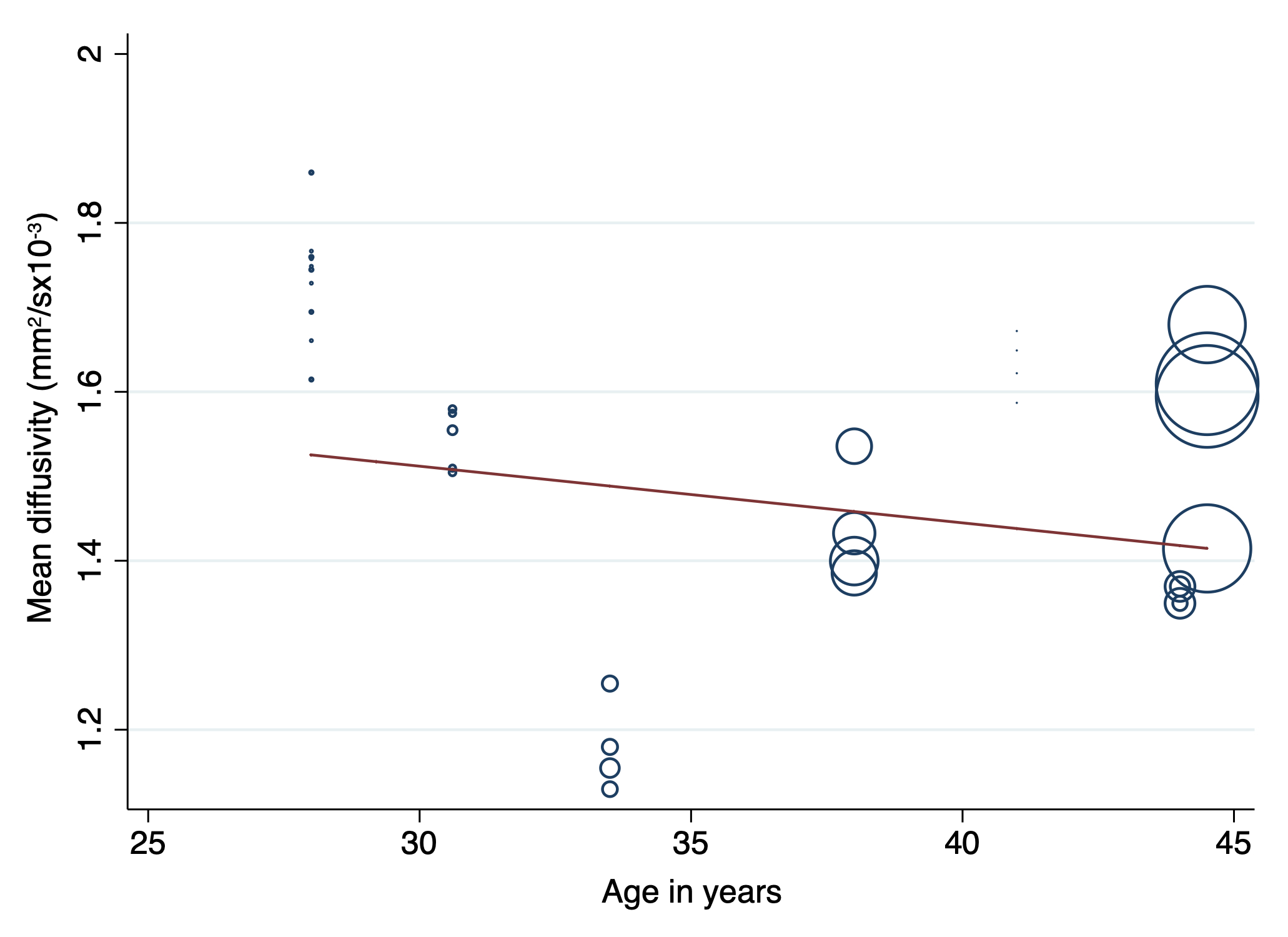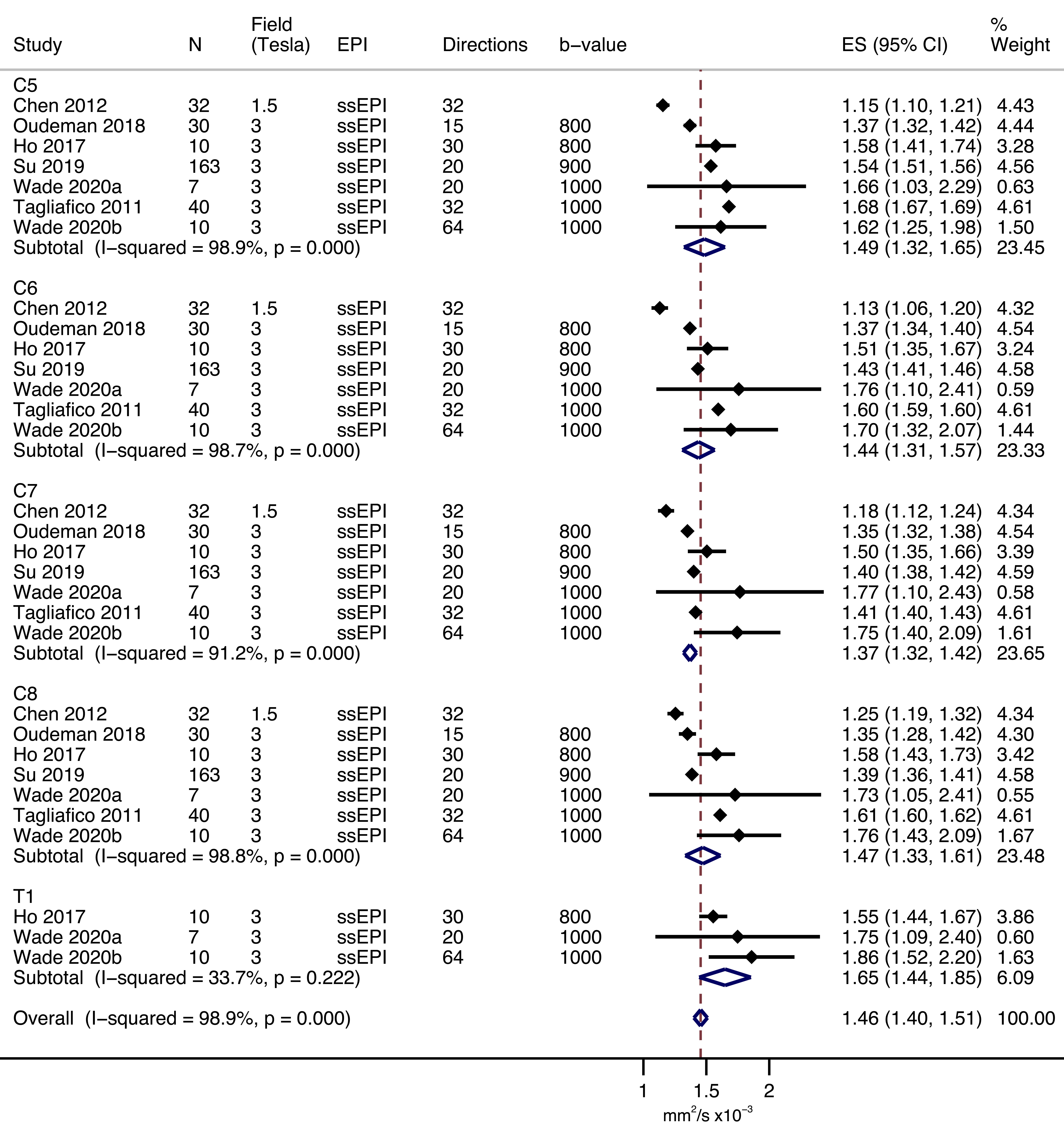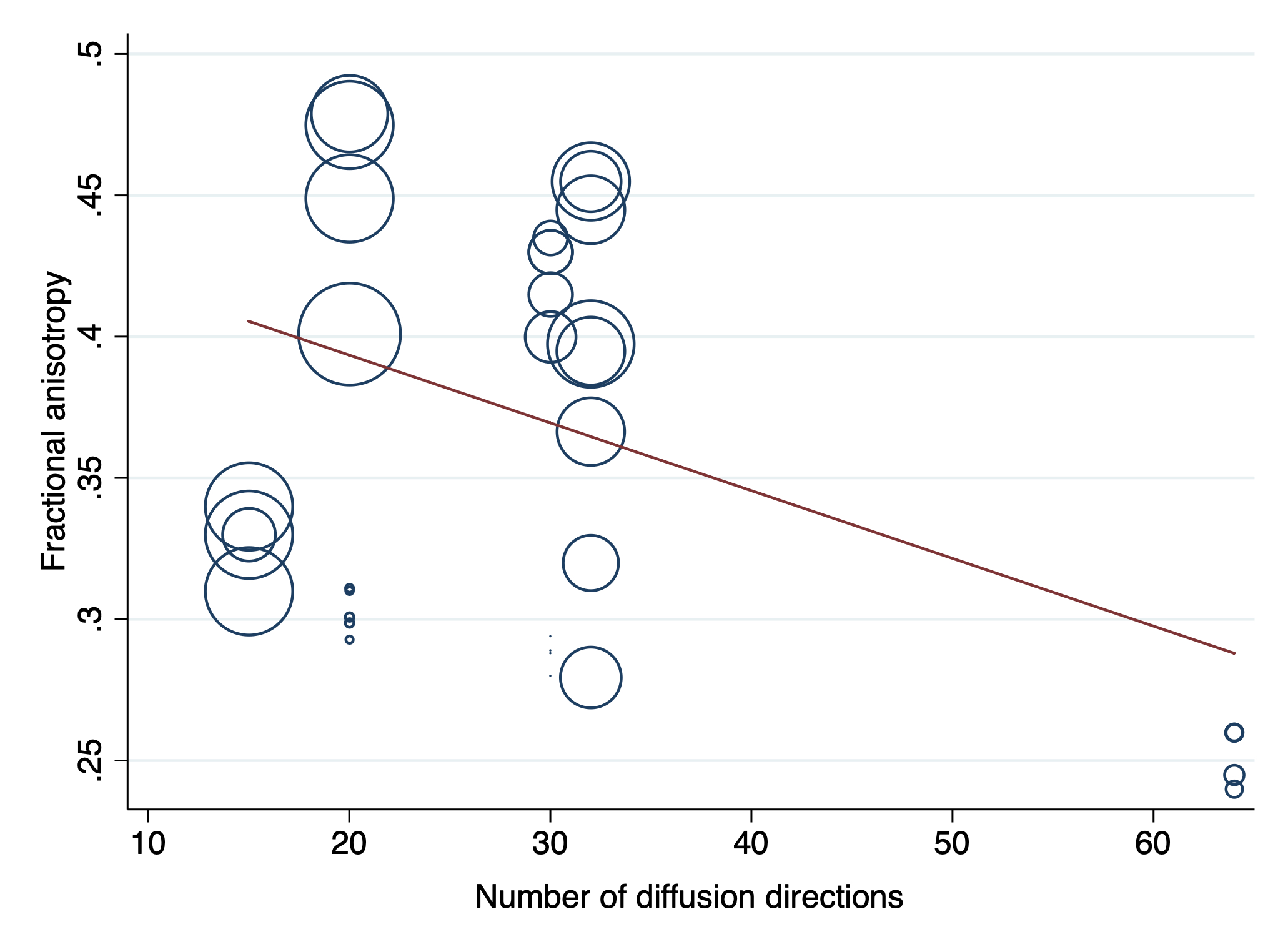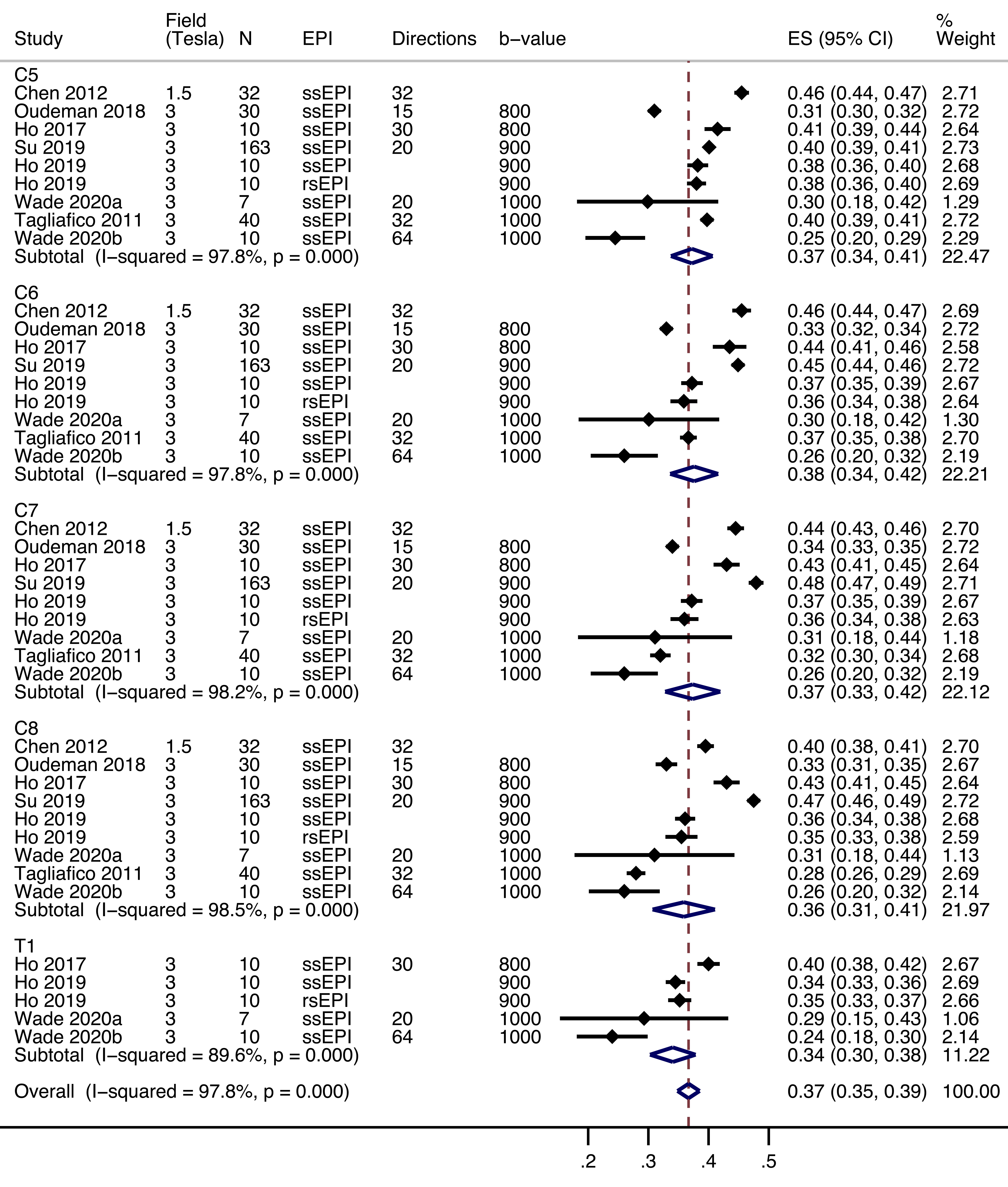Diffusion Tensor Imaging of the Roots of the Brachial Plexus: A Systematic Review and Meta-Analysis of Normative Values
Ryckie George Wade, MBBS MSc MClinEd MRCS FHEA, Department of Plastic and Reconstructive Surgery, University of Leeds, Leeds, United Kingdom, Alexander Whittam, BSc MBChB MRCSEd, Sheffield Teaching Hospitals NHS Foundation Trust, Sheffield, United Kingdom, Irvin Teh, BE MBiomedE PhD, University of Leeds, Leeds, United Kingdom, Gustav Andersson, MD PhD, Umeå University, Umeå, Sweden, Fang-Cheng Yeh, MD PhD, Pittsburgh NMR Center for Biomedical Research, Carnegie Mellon University, Pittsburgh, PA, Mikael Wiberg, MD PhD, Umea University, Umea, Sweden and Grainne Bourke, MB BCh BAO FRCSI FRCS(Plast), Leeds Teaching Hospitals Trust, Leeds, United Kingdom
Title
Diffusion Tensor Imaging of the Roots of the Brachial Plexus: A Systematic Review and Meta-Analysis of Normative Values
Abstract
Purpose: Diffusion tensor magnetic resonance imaging (DTI) characterises tissue microstructure and provides proxy measures of nerve health sensitive to myelination, axon diameter, fibre density and organisation. This may be valuable in the assessment of the roots of the brachial plexus both in health and disease. Therefore, there is a need to define the normal DTI values of the roots of the brachial plexus.
Methods: The literature was systematically searched for studies of asymptomatic adults who underwent DTI of the brachial plexus. Participant characteristics, scanning protocols, and measurements of the fractional anisotropy (FA) and mean diffusivity (MD) of each spinal root were extracted by two independent review authors. Generalised linear modelling was used to estimate the effect of experimental conditions on the FA and MD. Meta-analysis was performed using Cohen's method with random-effects.
Results: Nine articles, describing 316 adults (1:1 male:female) of mean age 35 years (SD 6) were included. For every additional 10 diffusion sensitising gradient directions the FA reduced by 0.01 (95% CI 0.01, 0.03; Figure 1). Each year of life reduced the MD by 0.03 x10-3 mm2/s (95% CI 0.01, 0.04; Figure 2). Meta-analysis showed that the normal FA of the roots was 0.37 (95% CI 0.36, 0.39; I2 98%, Figure 3). The pooled estimate of the MD of the roots of the brachial plexus was 1.51 x10-3 mm2/s (95% CI 1.45, 1.57; I2 99%, Figure 4).
Conclusions: The FA and MD of the roots of the brachial plexus are affected by experimental conditions and vary substantially between studies. We provide a range of normative values to which researchers and clinicians may cautiously refer.
Figure 1. Meta-regression with a linear fit showing that higher temporal resolution is associated with lower fractional anisotropy of the roots of the brachial plexus.
Figure 2. Meta-regression with a linear fit showing that increasing age is associated with lower mean diffusivity of the roots of the brachial plexus.

Figure 3. Summary estimates of the normal fractional anisotropy of the roots of the brachial plexus.
Figure 4. Summary estimates of the normal mean diffusivity of the roots of the brachial plexus.

Back to 2021 ePosters


